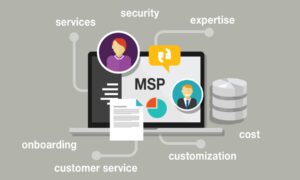Not every data collection task requires the exclusivity of a dedicated proxy. For startups and small teams working within limited budgets, shared IP networks present a practical way to access online data.
When chosen carefully from the best shared proxies, teams can support tasks like trend tracking, content monitoring, or competitor research, offering a balance of cost and performance that fits the needs of leaner operations.
But cost alone isn’t the only reason shared IPs make sense. Shared IP networks give teams the freedom to explore data strategies, test tools, and gather insight without committing to the overhead of a dedicated setup.
Easy to Start Small
Building a robust data pipeline often begins with questions, not answers: which sources matter most? What request volumes are sustainable? How do platforms respond to different traffic patterns?
For teams in the early stages of data work (especially those without in-house scraping knowledge), starting with shared proxies allows them to explore these unknowns without locking into a rigid or costly infrastructure.
Shared IPs allow for more trial and error. A team can launch a lightweight scraper, monitor how well their requests perform, and make adjustments as needed. This level of flexibility is particularly useful when experimenting with data models, evaluating reliability, or determining which platforms are viable sources for long-term tracking.
A Safe Way to Validate Use Cases
Not every organization is ready to operate at scale from day one, and not every data collection idea justifies a full infrastructure rollout. Shared proxy networks provide a way to validate assumptions before larger investments are made.
Let’s say a team wants to build a dashboard that monitors product availability across a handful of e-commerce sites. A dedicated proxy setup might offer faster throughput or more consistent geolocation targeting, but until the team confirms that the dashboard works, delivers value, and gains traction, shared IPs offer more than enough support.
If the project scales, the infrastructure can follow. If not, little has been lost in sunk costs.
This approach reduces technical and financial risk. Shared proxies make it easier to say, “Let’s try it,” without worrying about overcommitting or overspending too early.
Managing Access Without Overhead
One of the primary benefits of shared IP networks is reduced maintenance. Dedicated proxies often require hands-on configuration, ongoing monitoring, and occasional replacement due to performance drops.
While this level of control is necessary for certain use cases, it introduces overhead that smaller teams may not have the capacity to manage.
Shared proxies are maintained and rotated by the provider. The user doesn’t need to manage IP reputation, take care of the infrastructure, or manually rotate addresses. Thus, internal resources are freed up, which allows teams to focus on development, analyses, or product improvement instead of proxy administration.
When stability is a concern, a reputable provider that actively monitors and optimizes its IP pool is essential – best shared proxies come from networks with regular IP refresh cycles, responsive customer support, and minimal downtime.
Ideal for Iteration and Learning
Early-stage data projects often evolve quickly: a tool built for monitoring content may later expand into competitive intelligence; an MVP built around a few dozen URLs might scale to cover thousands.
Starting with a shared proxy setup gives teams the room to iterate and adapt their scraping logic, traffic volumes, and data storage workflows as time goes on. Crucially, this process also builds internal capability. Teams learn how to interact with different web structures, how to manage rate limits, and how to handle platform responses without the pressure of managing a high-cost proxy setup from day one.
Shared IP networks aren’t just a stepping stone but rather a sustainable path toward more sophisticated, higher-scale systems down the road.
From Testing Ground to Growth Strategy
Shared IPs are more than just a testing ground – they’re a smart way to scale deliberately. Startups often upgrade to dedicated proxies as they grow and once their data needs increase and the clear value is there. Until then, shared proxies handle a bunch of lighter, regular tasks perfectly, like monitoring ads without straining the budget.
As long as the traffic remains moderate, and the platforms being accessed don’t demand exclusive IP behavior, shared networks can reliably support various operations long term. That allows teams to increase volume gradually, target new regions, or diversify data sources without jumping prematurely into complex infrastructure. By treating shared proxies not as a limitation but as a strategic choice, organizations can scale smarter and move faster.
A Practical Start to Smarter Data
Shared IP networks are a smart move for getting data without breaking the bank. They are perfect if you’re not 100% sure what will be the main purpose of them, or if things are likely to change. It lets you play around and figure things out without a massive upfront commitment.
In essence, shared proxies are a sweet spot: you get good access without crazy costs. Therefore, they’re ideal for teams who want to take their time, try things out, and grow sustainably – shared proxies give you what you need to start, see if your business ideas are solid, or just explore the possibilities.



































